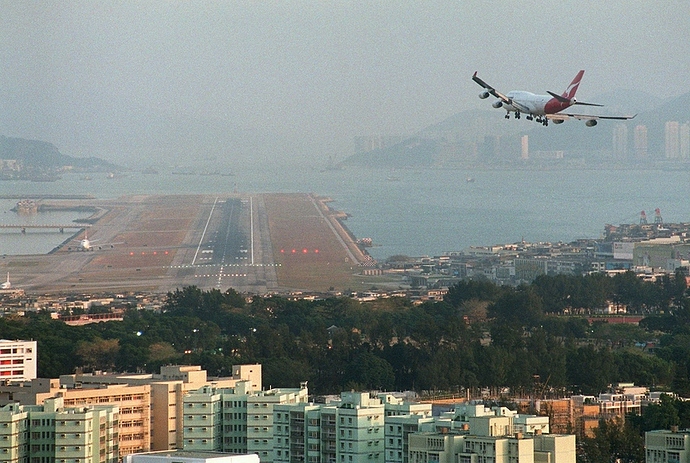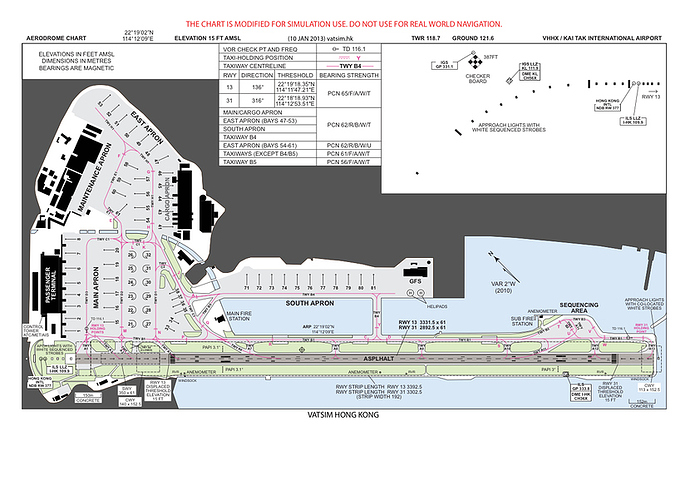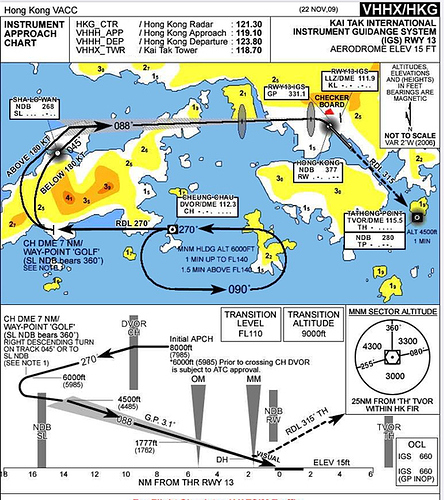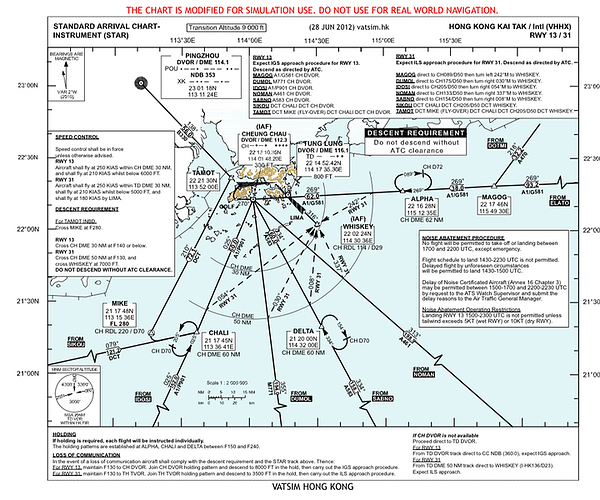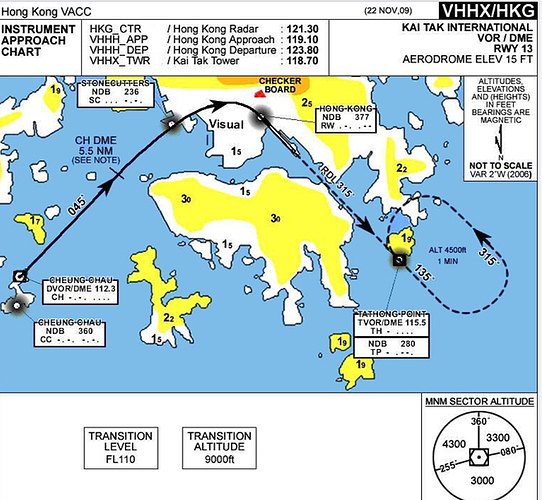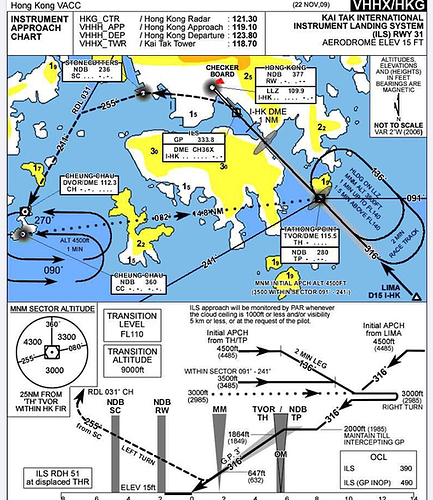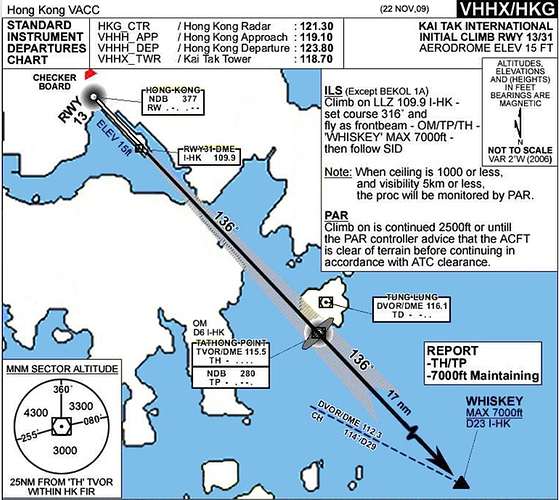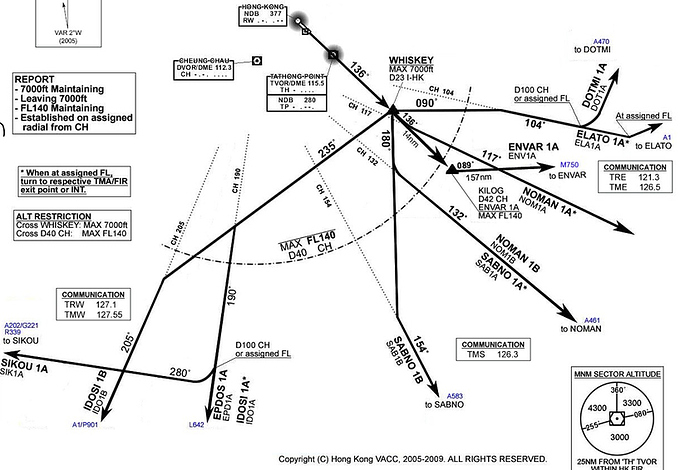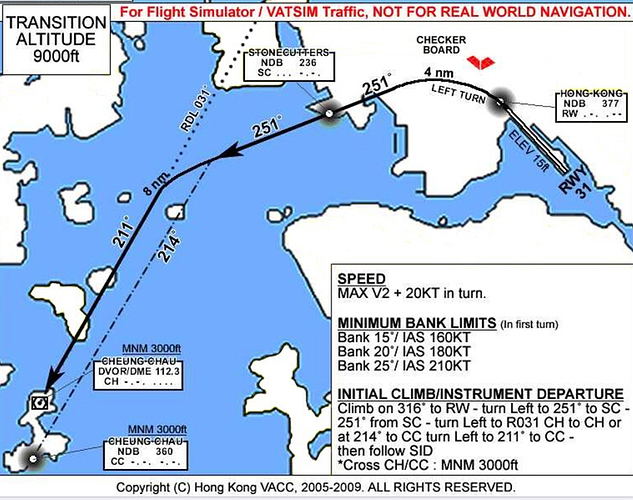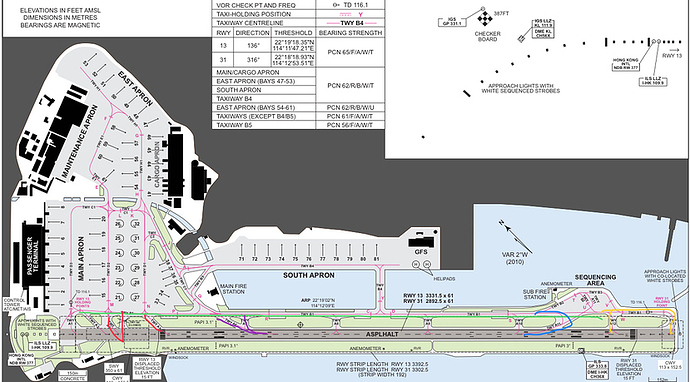Repost from the IFC, closed on there for different rules (PM if you want more info)
(I reposted this because in every flight Sim I see people asking how?, so I thought this would help !)
Edit: Forgot to include https://www.wikipedia.org/ as a source
How to: Kai Tak
Please note that not all of what you read here will necessarily apply to Infinite Flight. Thanks! And Huge thanks to: https://www.platinumairways.org/files/DOTW_Charts/VHHX.pdf and @dca.iad.aviation on the IFC
Introduction to the Airport
The History Channel program Most Extreme Airports ranked it as the 6th most dangerous airport in the world: Because of the geography of the area positioning the airport with water on all sides of the runway, with Kowloon City’s residential apartment complexes and 2000+ft mountains to the north-east of the airport, aircraft could not fly over the mountains and quickly drop in for a final. Instead, aircraft had to fly above Victoria Harbour and Kowloon City, passing north of Mong Kok’s Bishop Hill. After passing Bishop Hill, pilots would see Checkerboard Hill with a large red and white checkerboard pattern. Once the pattern was sighted and identified, aircraft made a low-altitude (sub-600 ft) 47° right-hand turn, ending with a short final and touchdown. For pilots, this airport was technically demanding, as the approach could not be flown by aircraft instruments, but rather visually because of the right-hand turn required.
The Airport
There was one runway at Kai Tak, 13/31
(charts via -
https://www.platinumairways.org/files/DOTW_Charts/VHHX.pdf)
Why Kai Tak Was Shut Down
Runway 13 is the main reason Kai Tak was shut down, it was infamous for the physically demanding visual approach over Kowloon. Over 600 people have lost their lives due to this approach, it was only a matter of time before it was closed.
Gates & Terminals
The Kai Tak airport consisted of a linear passenger terminal building with a car park attached at the rear. There were eight boarding gates attached to the terminal building.
A freight terminal was located on the south side of the east apron and diagonally from the passenger terminal building.
Due to the limited space, the fuel tank farm was located between the passenger terminal and HAECO maintenance facilities (hangar).
Landing on Runway 13
Runway 13 at Kai Tak was infamous for its “Checkerboard” Approach. It’s one of the only reasons Avgeeks love(d) Kai Tak!
Checkerboard Approach
The Checkerboard Approach initially begins to the south-west of the airport, heading 270 at a minimum altitude of 6000 ft. At this beginning stage of the approach, the aircraft should be passing above Cheung Chau- a small island just off Lantau Island. After that, the aircraft was required to proceed up to “Point Golf”, which was on the south side of Lantau Island and directly south of the current Chek Lap Kok Airport. Approaching aircraft then had to make a right-hand U-turn in order to intercept the localiser for the Runway 13 IGS, which generally happened above the current Chek Lap Kok Airport site.
The IGS was, in essence, a heavily modified ILS system designed uniquely for Kai Tak Airport, otherwise functioning identical to a normal ILS. At roughly ~2500 ft, the autopilot was disconnected, and the rest of the approach was flown manually. The aircraft then descended below 1000 ft and shortly afterwards reached Kowloon Tsai Parkland its small hill. Upon reaching the small hill above Kowloon Tsai Park, which was painted with a large “aviation orange” and white checkerboard used as a visual reference point on the final approach (in addition to the middle marker on the Instrument Guidance System), the pilot needed to make a 47° visual right turn to line up with the runway and complete the final leg. The aircraft would be just 2 nautical miles] (3.7 km) from touchdown, at a height of less than 1,000 feet (300 m) when the turn was made. Typically the plane would enter the final right turn at a height of about 650 feet (200 m) and exit it at a height of 140 feet (43 m) to line up with the runway.
That demanding manoeuvre became known in the aviation community as the “Hong Kong Turn” or the “Checkerboard Turn”. For many airline passengers on planes approaching and landing on Runway 13 at Kai Tak Airport, it became referred to as the “Kai Tak Heart Attack”, because they were often frightened to be turning at such a close proximity to the ground, which, at less than 150 ft, or 45 metres, was generally less than even the Boeing 767’s wingspan, which is considered a medium-size airliner. The turn was so low that passengers could see television sets running in people’s residences near the airport.
Handling the runway 13 approach was difficult enough with normal crosswinds because, even if the wind direction was constant, it was changing relative to the aircraft as the plane made the 47° visual right turn, meaning that what would be a headwind heading directly east on the IGS would become a crosswind and begin to push the aircraft over and off the runway alignment without correction. The landing would become even more challenging when crosswinds from the north-east were strong and gusty during typhoons. The mountain range north-east of the airport also made the wind vary greatly in both speed and direction. Watching large aircraft banking at low altitudes and taking big crab angles during their final approaches was popular with plane spotters. Despite the difficulty, the runway 13 approach was used most of the time due to the prevailing wind direction in Hong Kong.
Because of the turn required during final approach,ILS was not available for runway 13 and landings had to follow a visual approach. This made the approach unusable in low visibility conditions.
In Infinite Flight:
STARs
Stonecutters’ Approach
Alongside the Checkerboard approach, there was a lesser known approach into Kai Tak that led aircraft over the Stonecutters’ DME at a heading of 040 and led into a ~90° turn to line up on Runway 13. This approach was used extremely infrequently, since the Checkerboard approach had a localiser and glide slope to work off of, and DMEs are very rarely used in commercial aviation today. It generally can be assumed this approach was used when the localiser and glide slope were offline for maintenance.
(charts via -
https://www.platinumairways.org/files/DOTW_Charts/VHHX.pdf)
Landing on Runway 31
This arrival is almost unheard of, it’s almost only used when there are very specific problems, like damage on the R13 Checkerboard hill plate.
Runway 31 approaches and landings were similar to other airports in which ILS was available. Runways 13 and 31 are, in fact, the same physical runway, however if a flight is landing on Runway 13 that means that the aircraft is flying in on a south-easterly direction, while a flight landing on Runway 31 would be coming in a north-westerly direction. This applies for flights taking off on runways 13 and 31 - a flight departing from runway 13 would be heading south-east, and vice versa. This is because runways are named for their magnetic heading in decadegrees, which means that a runway oriented anywhere between 125° and 134° magnetic would be numbered 13, and vice versa. The path towards the runway passed within 300 metres to the north of Heng Fa Chuen on Hong Kong Island.
STARs
Departing Runway 13
Runway 13 was the preferred departure runway for heavy aircraft due to the clear departure path, opposite that of the runway 31 departure. Heavy aircraft on departure using runway 13 would often need nearly the entire length of the runway, particularly during summer days due to the air temperature.
SIDs
Departing Runway 31
The 31 departure is definitely way more difficult than the 13 departure.
When lined up for takeoff on runway 31, a range of hills including 1,500 feet (460 m) Beacon Hill would be right in front of the aircraft. The aircraft had to make a sharp 65-degree left turn soon after takeoff to avoid the hills (i.e. the reverse of a Runway 13 landing). If a runway change occurred due to wind change from runway 13 departures to runway 31 departures, planes that were loaded to maximum payload for runway 13 departures had to return to the terminal to offload some goods to provide enough climbing clearance over buildings during a runway 31 departure.
Taxing
When taxing off of Runway 13 you exit on TWY A11 (blue), and go to the sequencing area if necessary then generally use TXY 81 (green) to get to their gates! When lining up Runway 13, you use TXY A2, or TXY A3 (yellow) , if needed. When departing Runway 31 you use TXY A6 (purple), then use TXY 81 (green) to get to their Gates! When lining up Runway 31, you use taxiway A3 or A5 (red)! As seen by the chart it is pretty straightforward, I hope this segment can benefit users!
Thank you for viewing this thread about Kai Tak!
This was based on: How to DCA - Community Tutorials - Infinite Flight Community
Next Topic!
- How to: New York
- How to: Ezeiza (Buenos Aires)
- How to: Chennai (India)
- How to: VFR Los Angeles
- How to: VFR New York
